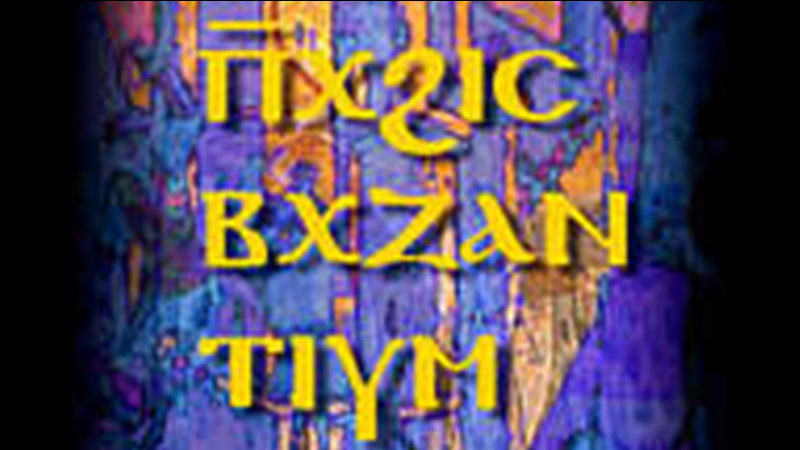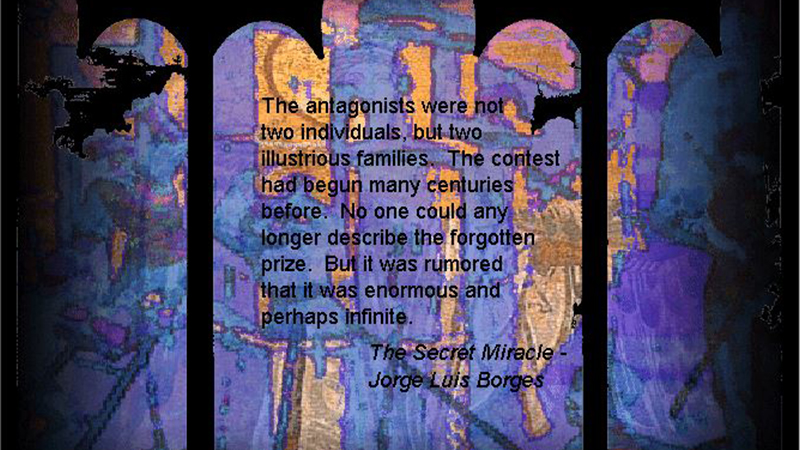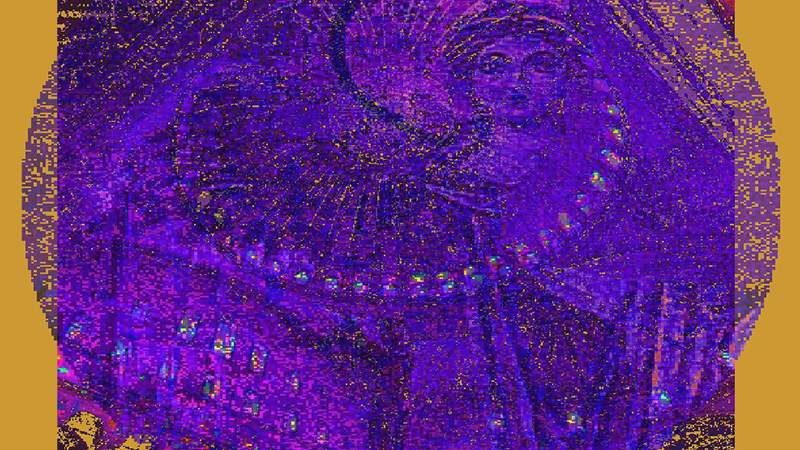"Pyxis Byzantium" developed from "a trip to Constantinople and extensive reading about ancient Byzantium. The ancient city of Byzantium was destroyed in 1453. All spring, during the months before the final destruction, the citizens of Byzantium sat within their beautiful walls—knowing that they had only days or weeks to survive. Among the populace, there were those who were resigned, there were those who had reasons and explanations for what would happen, there were those who predicted miracles and wonders: but everyone was essentially paralyzed to do anything to save the city. They gathered at the beautiful Sta. Sophia and prayed. This piece is narrated by the people I imagine might have been waiting for the fall of Byzantium in the spring of 1453.
It is also, though, about the destruction and loss of other civilizations. What persists in the human story is the structure of decline and defeat—the narrative of predictability and surprise that accompanies the loss of a culture. The people of Byzantium sit impotent inside their walls much as the ancient Romans did, and much as we, even today, do when we are threatened with world-changing events.
The 'layout' of the piece—the narrative access—is a map of Byzantium. But, in addition, the word Pixis means 'little box' in Greek. Thus, the architectural structure of this work is like one of those complex, little Byzantine painted ivory cases with boxes and boxes nested inside. To read the piece, one needs to keep mousing over and clicking on the images, moving from illuminated scene-box to scene box. Any screen which seems to have no clear place to click will reveal new things wherever you click or mouseover. If you are eager to move to another 'scene,' all you need to do is mouse over the screen to find another 'box' to open. The story will continue.
As such, *Pixis Byzantium* represents both familiar aspects of my work over the years and new challenges in framing material story with imaginary time. This work is an experiment in fusing the coding/architecture/shape of the electronic work with the actual materiality of the landscape, the natural phenomena, and the presence of time in place." -- From 2008 ELO Media Arts show
1 COPY IN THE NEXT
The Marjorie C. Luesebrink Collection
An unpublished copy.
This copy is a ZIP disk, labeled in the artist's hand: "Backup June 02." This copy was given to ELO by Marjorie Luesebrink in Spring of 2018.


